חדשות המחקר
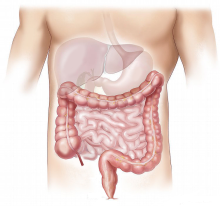
Carmel Even, Sondra Turjeman, Omry Koren: Quinoa Soluble Fiber and Quercetin Alter the Composition of the Gut Microbiome and Improve Brush Border Membrane Morphology In Vivo ( Gallus gallus) (Nutrients . )
Quinoa (Chenopodium quinoa Willd.), a gluten-free pseudo-cereal, has gained popularity over the last decade due to its high nutritional value. Quinoa is a rich source of proteins, carbohydrates, fibers, tocopherols (Vitamin E), unsaturated fatty acids and a wide range of polyphenols. The study used Gallus gallus intra-amniotic feeding, a clinically validated method, to assess the effects of quinoa soluble fiber (QSF) and quercetin 3-glucoside (Q3G) versus control.

Offer Amir: Anti-Remodeling Cardiac Therapy in Patients With Duchenne Muscular Dystrophy, Meta-Analysis Study (Front Pharmacol . )
Almost all Duchenne muscular dystrophy (DMD) patients that reach their 30s present cardiomyopathy. As a result, this population remains under-treated. There is no sufficient proof of the efficacy of anti-remodeling cardiac therapy for DMD cardiomyopathy (DMDCM). We aim to assess the efficacy of anti-remodeling cardiac therapy for DMDCM by using meta-analysis.

Denis Drobot, Eli Kakiashvilli, Amitai Bickel: Continuous Monitoring of Mental Load During Virtual Simulator Training for Laparoscopic Surgery Reflects Laparoscopic Dexterity: A Comparative Study Using a Novel Wireless Device (Front Neurosci .)
Cognitive Load Theory (CLT) relates to the efficiency with which individuals manipulate the limited capacity of working memory load. Repeated training generally results in individual performance increase and cognitive load decrease, as measured by both behavioral and neuroimaging methods. One of the known biomarkers for cognitive load is frontal theta band, measured by an EEG. Simulation-based training is an effective tool for acquiring practical skills, specifically to train new surgeons in a controlled and hazard-free environment. Measuring the cognitive load of young surgeons undergoing such training can help to determine whether they are ready to take part in a real surgery. In this study, we measured the performance of medical students and interns in a surgery simulator, while their brain activity was monitored by a single-channel EEG.
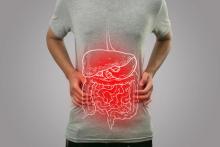
Nasser Sakran: Food Addiction and Binge Eating Impact on Weight Loss Outcomes Two Years Following Sleeve Gastrectomy Surgery (Obes Surg .)
Emerging evidence suggest that problematic eating behaviors such as food addiction (FA) and binge eating (BE) may alter following bariatric surgery (BS) and impact weight outcomes. We aimed to examine the prevalence of FA and BE and their associations with weight outcomes 2 years post-sleeve gastrectomy (SG).
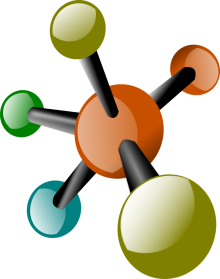
Maria Elias, Itay Onn: Disrupting the MAD2L2-Rev1 Complex Enhances Cell Death upon DNA Damage (Molecules . )
DNA-damaging chemotherapy agents such as cisplatin have been the first line of treatment for cancer for decades. While chemotherapy can be very effective, its long-term success is often reduced by intrinsic and acquired drug resistance, accompanied by chemotherapy-resistant secondary malignancies....

Andrei Braester: Venous Thrombosis within 30 Days after Vaccination against SARS-CoV-2 in a Multinational Venous Thromboembolism Registry (Viruses . )
Venous thromboembolism (VTE)-including deep vein thrombosis, pulmonary embolism, and cerebral venous sinus thrombosis (CVST)-may occur early after vaccination against the severe acute respiratory syndrome coronavirus 2 (SARS-CoV-2). We sought to describe the site, clinical characteristics, and outcomes of VTE after vaccination against SARS-CoV-2.

Edo Y Birati: Low Blood Pressure Threshold for Adverse Outcomes During Left Ventricular Assist Device Support (Am J Cardiol . )
It has been suggested that maintaining low mean arterial pressure (MAP) in left ventricular assist device (LVAD) recipients is associated with a reduced risk of stroke/death. However, the lower limit of the optimal MAP range has not been established. We aimed to identify this lower limit in a contemporary cohort of LVAD recipients with frequent longitudinal MAP measurements.

Left atrial phasic echocardiographic functional analysis in relation to diastolic left ventricular hemodynamic parameters acquired during right heart catheterization (Int J Cardiol Heart Vasc .)
Doppler echocardiography has become the leading non-invasive tool for hemodynamic screening and follow-up in various clinical situations. Our objective was to assess whether left atrium (LA) functional echocardiographic parameters correlate with hemodynamic left ventricle (LV) filling parameters measured during right heart catheterization (RHC) in various disease states.
(Ephraim Rinot, Shemy Carasso, Merav Yarkoni, Offer Amir, Gabby Elbaz Greener)

Jalal Baranseh, Anton Ouryvaev, Gassan Moady, Ayelet Shai: Pro-BNP in the differential diagnosis of dyspnea in patients treated with immune-checkpoint inhibitors: Case Report (J Oncol Pharm Pract .)
Immune checkpoint inhibitors (ICI) induced cardiac toxicity can present with non-specific symptoms and signs. Early recognition and treatment are important; however, diagnosis can be challenging.
Khalaf Kridin, Orly Avni, Erez Onn: Dipeptidyl-peptidase IV inhibitor (DPP4i) confers increased odds of bullous pemphigoid even years after drug initiation (Arch Dermatol Res .)
The timing pattern in which dipeptidyl-peptidase IV inhibitors (DPP4i) confer the risk of bullous pemphigoid (BP) is unknown. To investigate the odds of BP following exposure to DPP4i and to perform a duration-response analysis evaluating the risk of BP in relation to the duration of exposure to the culprit drug. A population-based nested case-control study was performed comparing diabetic patients with BP (n = 1458) with age-, sex- and ethnicity-matched diabetic control subjects (n = 6051) with respect to the prevalence of exposure to DPP4i.

Karl L Skorecki: De novo mutation rates at the single-mutation resolution in a human HBB gene-region associated with adaptation and genetic disease (Genome Res .)
While it is known that the mutation rate varies across the genome, previous estimates were based on averaging across various numbers of positions. Here we describe a method to measure the origination rates of target mutations at target base positions and apply it to a 6-bp region in the human hemoglobin subunit beta (HBB) gene and to the identical, paralogous hemoglobin subunit delta (HBD) region in sperm cells from both African and European donors.

Gassan Moady, Shaul Atar: Management of Patients with Left Ventricular Assist Device during the COVID-19 Pandemic (Medicina (Kaunas) .)
The novel coronavirus disease 2019 (COVID-19) is an infectious disease with multi-organ involvement, including the cardiovascular system. The disease may cause several cardiovascular complications, and may increase morbidity and mortality among patients with background cardiovascular disease. Patients with advanced heart failure are often treated with left ventricular assist device (LVAD), and represent a unique population mandating multi-disciplinary approach.
David Azoulay, Ilan Levov, Ety Shaoul, Amir Asher Kuperman: Laboratory Indices in Patients with Positive and Borderline Flow-cytometry EMA-screening Test Results for Hereditary Spherocytosis (J Pediatr . )
Objective: To evaluate laboratory Indices in patients with hereditary spherocytosis (HS), with positive and borderline flow-cytometry eosin-5-melamide (EMA)-bound red blood cells screening test.
Study design: We compared laboratory indices of 151 samples obtained from 139 different individual patients with negative, borderline, or positive EMA-test results. We also compared the clinical data of the patients in each EMA test results group.
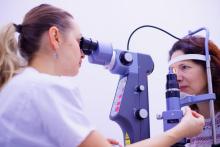
Yuval Cohen, Otzem Chassid: Light Intensity in Nursery Schools: A Possible Factor in Refractive Development (Asia Pac J Ophthalmol (Phila) .)
Increased levels of outdoor light have been found to be associated causally with decreased rates of myopia. The goal of this study was to measure the effect of indoor nursery school light intensity on refraction of preschool children in Israel.





